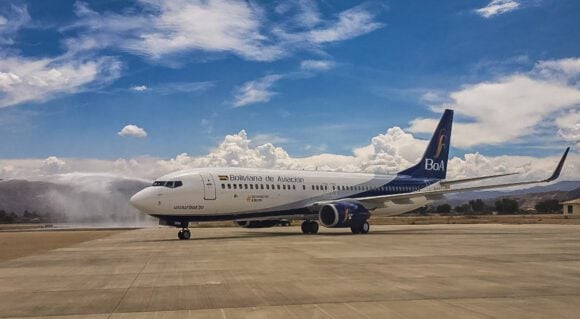
Delivery of Japan Airlines first A350 XWB scaled
Thanks to the lifting of the state of emergency, Japan Airlines (JAL) is expecting domestic passenger demand to recover solidly toward the end of its fiscal year 2021, which runs until March 2022. International traffic will remain weak for the time being, but JAL thinks it will reduce its losses almost by half when it completes FY21, it said on November 2. JAL counts on solid domestic recovery.
Japan Airlines reported a ¥106.4 billion net loss for the April-September period, up from ¥-162.7 last year. The operating loss was reduced to ¥141.7 billion from ¥219.3 billion.
Total revenues increased to ¥290.6 billion from ¥194.8 billion, of which ¥29.8 billion came from the international network, an improvement over the ¥9.2 billion last year. Domestic passenger revenues were ¥89.9 billion, up from ¥69.6 billion. Cargo revenues improved to ¥98.3 billion from ¥53.4 billion and were strong, notably the automobile and electric parts going to North America.
Like its rival ANA, Japan Airlines offered only limited international services, mainly between Asia and North America. It also did repatriation flights and flew athletes into Japan for the Olympic and Paralympic games. Nevertheless, international revenue passenger kilometers (RPKs) grew by 255.1 percent year on year but on a load factor of just 22.7 percent.
Domestic services were affected by the extended state of emergency until September. With new Covid cases in August, demand in what should have been the peak season well rapidly. RPKs improved by 28.9 percent with a load factor of 42.9 percent.
JAL’s low-cost carriers ZIPAIR and Spring Japan, which became a subsidiary in June, carried only 8.238 passengers at a load factor of 5.9 percent. On international services, they earned ¥673 million while domestic revenues ended at ¥153 million. ZIPAIR started services to Singapore on September 7.
JAL ended HY1 with ¥372.9 billion in cash and cash equivalents, up from ¥346.7 billion in September last year. During the period, it issued ¥30 billion in straight bonds and borrowed ¥24.4 billion in bank loans, while securing ¥300 billion in hybrid financing to fund its aggressive sustainability plans and strategy for the near future. In HY1, is sought to reduce fixed costs by in-sourcing more activities, reducing personnel costs and bonusses. The exemption of landing fees and jet fuel tax helped the carrier.
“The first half of fiscal year 2021 was very difficult for us because of the repeated declarations of a state of emergency caused by the prolonged COVID effect. However, vaccination has been advanced in Japan, and consequently, the recent domestic demand recovery is gradually expected such as the passenger number has been increasing since October 2021″, JAL says in its financial statements.
Domestic passenger demand is expected to grow to 65 percent in Q3 compared to 2019 and to 90 percent in Q4. International demand will remain low at a maximum of 20 percent by Q4. For the full year, Japan Airlines expects a net loss of ¥146 billion compared to ¥286.6 billion last year, with revenues up to ¥766 billion from ¥481.2 billion. Domestic revenues are expected to grow by 122 percent to ¥297 billion.
As announced last month, JAL has started a joint study with Vertical Aerospace to operate their eVTOL aircraft in 2025 at the Osaka Expo. This is part of its long-term strategy to establish an operational platform for the next generation of air mobility.
Views: 0




